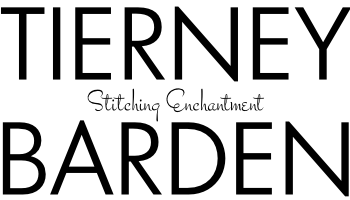Zero waste has been a guiding force since the inception of my dye business. To be able to follow my fabrics as much as possible from field to compost is important to me. I feel closer to my fabrics by handling much of the process myself, and the work is rewarding and satisfying.
Living in this high-speed, high-tech modern world, I depend on hand work (and books and movies!) for balance. My personal pursuits are mainly quilting for charity, sewing bags and garments, spinning yarn and knitting. Wow, that sounds like I have mounds of spare time. Trust me, I don't, because the bulk of my time is happily spent between the dye house and studio.
Because I imagine most of you purchase fabric and dive right in to your projects, I thought describing the cutting process for each yard, once dyed and pressed, might be interesting.
We hand cut for three reasons:
- We're small. No fancy commercial equipment here.
- We can control and monitor each and every piece of fabric going into your hands.
- We get the most from every piece; minimizing waste & maximizing goodness for you!
First up on the cutting table are yardage, fat quarters, fat eighths, charms and strips. These cuts use up most of the yard, and make my heart skip a beat considering the possibilities. So often I wonder, "What will you become?" "Who's heart will you melt?"
The next category to be cut is scraps. Neatly cut scraps, shown above, are weighed and then carefully bundled into 4.5 oz. bags. My Type-A personality won't let an untidy piece make it into the pile! Treating every step in the process with respect matters. The scraps are useful sized pieces for quilters, doll makers, sewers, miniaturists and fabric artists. Our scrap bags feel like a party in a bag - a joyful surprise!
The next category to be cut is "smalls". Pieces that are too small for the scrap bag, but are just the right size for EPP, postage stamp quilts, miniature quilts, doll artists and the like. Handled with the same respect as the previous cuts, each piece is visually inspected, neatly cut and ensured to be a useful size. Shown above is a pile of "smalls" beneath a few EPP stars (top right) and a stack of gray and yellow pieced blocks for hexis.
The final stop for every yard of fabric is the trimmings. They perform a variety of jobs from doll stuffing to tying wrapped packages, and are eventually added to the compost pile. Because our fabrics are certified organic cotton and free of harmful mordants, they're completely safe for the compost pile.
To appreciate every last bit of beautiful cloth is a responsibility we easily accept. You can find our hand dyed fabrics and quilt patterns in the shop. Patterns are offered as both PDF's and kits. In future posts, I'll describe my dye process and quilt design process. In the mean time, I'd love to hear your thoughts and questions about our organic, naturally dyed fabrics.





